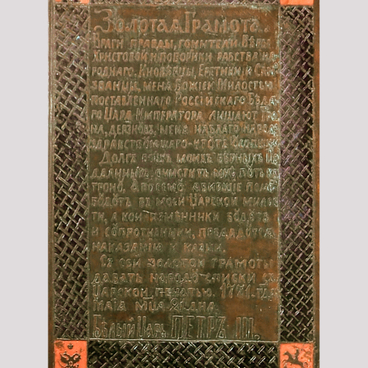The Сelt is a tool used as an ax or chisel during the Bronze Age. Such axes were used both in war and in domesticities.
The word ‘Celt’ was proposed for this type of cold weapon in the 17th century but came into use quite recently. Scientists believe that the name comes from the Latin word ‘celtis’, meaning ‘chisel’.
The socketed bronze Celti axes are elongated tools cast in molds. With the help of a closed straight tap, the celt was attached to a wooden handle stretched parallel to the blade. Various patterns were applied along the wide plane of the Celts.
An expedition of the Smolensk archaeologist Schmidt found a bronze Celt ax in 1957 during the excavation of an early Iron Age settlement near the village of Nakvasino in the Dorogobuzh district of the Smolensk region.
The Celt ax was discovered in the so-called ‘pit in the mainland’ — at a considerable depth.
During his research, Schmidt came to the following conclusions:
1. The Celt ax belongs to the Scandinavian group of Melar type Celts (Late Bronze Age). A similar type of ax was used in Sweden, Norway, Finland, less often in Poland and the Baltic States in 1100-700 BC.
2. The weapon was used in trade and appears to have arrived from Northern Europe, probably from Scandinavia.
3. The ax dates from the 8th century BC or the beginning of the 7th century BC.
4. This Celt ax was votive in nature, that is, it was a sacred gift, a sacrifice to certain deities. Perhaps the ax belonged to a tribal leader or a supreme shaman and served as a status item.
5. The weapon is an earlier artifact than the ancient settlement itself.
Probably, the ax belonged to more ancient tribes that existed on the territory of the Smolensk region in the Bronze Age, which were replaced by the tribes of the Dnieper-Dvinian culture.
The Celt ax was donated to the Smolensk Museum by Evgeny Alfredovich Schmidt in 1959.
The word ‘Celt’ was proposed for this type of cold weapon in the 17th century but came into use quite recently. Scientists believe that the name comes from the Latin word ‘celtis’, meaning ‘chisel’.
The socketed bronze Celti axes are elongated tools cast in molds. With the help of a closed straight tap, the celt was attached to a wooden handle stretched parallel to the blade. Various patterns were applied along the wide plane of the Celts.
An expedition of the Smolensk archaeologist Schmidt found a bronze Celt ax in 1957 during the excavation of an early Iron Age settlement near the village of Nakvasino in the Dorogobuzh district of the Smolensk region.
The Celt ax was discovered in the so-called ‘pit in the mainland’ — at a considerable depth.
During his research, Schmidt came to the following conclusions:
1. The Celt ax belongs to the Scandinavian group of Melar type Celts (Late Bronze Age). A similar type of ax was used in Sweden, Norway, Finland, less often in Poland and the Baltic States in 1100-700 BC.
2. The weapon was used in trade and appears to have arrived from Northern Europe, probably from Scandinavia.
3. The ax dates from the 8th century BC or the beginning of the 7th century BC.
4. This Celt ax was votive in nature, that is, it was a sacred gift, a sacrifice to certain deities. Perhaps the ax belonged to a tribal leader or a supreme shaman and served as a status item.
5. The weapon is an earlier artifact than the ancient settlement itself.
Probably, the ax belonged to more ancient tribes that existed on the territory of the Smolensk region in the Bronze Age, which were replaced by the tribes of the Dnieper-Dvinian culture.
The Celt ax was donated to the Smolensk Museum by Evgeny Alfredovich Schmidt in 1959.


